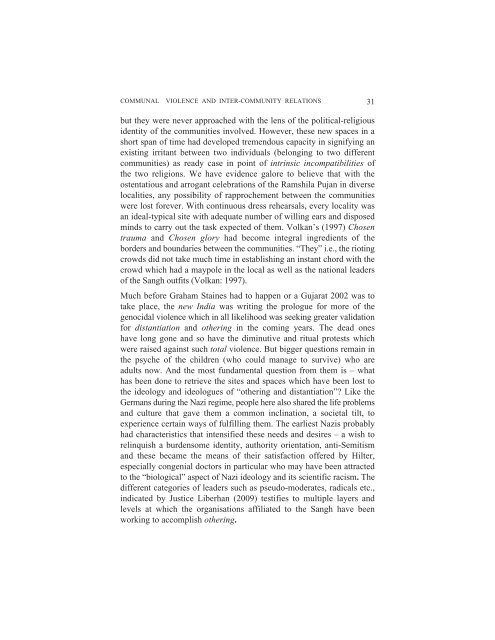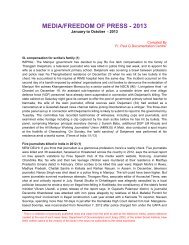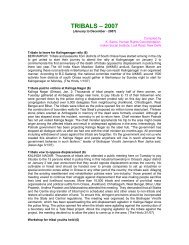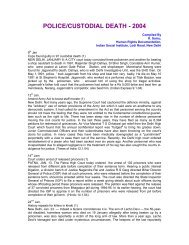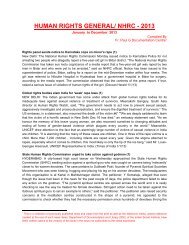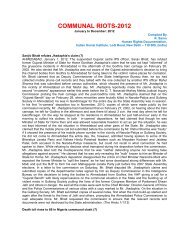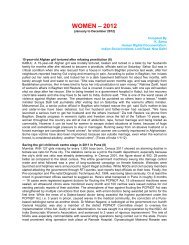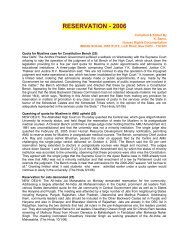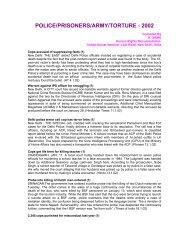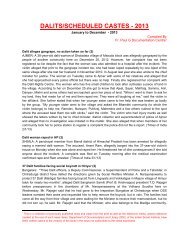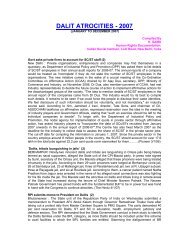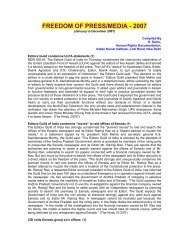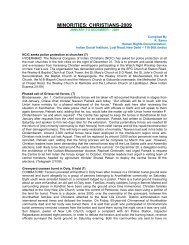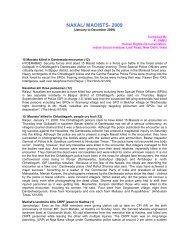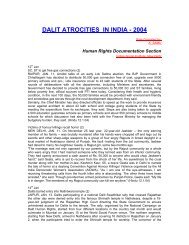Communal Violence and Inter-Community Relations - Indian Social ...
Communal Violence and Inter-Community Relations - Indian Social ...
Communal Violence and Inter-Community Relations - Indian Social ...
You also want an ePaper? Increase the reach of your titles
YUMPU automatically turns print PDFs into web optimized ePapers that Google loves.
COMMUNAL VIOLENCE AND INTER-COMMUNITY RELATIONS 31<br />
but they were never approached with the lens of the political-religious<br />
identity of the communities involved. However, these new spaces in a<br />
short span of time had developed tremendous capacity in signifying an<br />
existing irritant between two individuals (belonging to two different<br />
communities) as ready case in point of intrinsic incompatibilities of<br />
the two religions. We have evidence galore to believe that with the<br />
ostentatious <strong>and</strong> arrogant celebrations of the Ramshila Pujan in diverse<br />
localities, any possibility of rapprochement between the communities<br />
were lost forever. With continuous dress rehearsals, every locality was<br />
an ideal-typical site with adequate number of willing ears <strong>and</strong> disposed<br />
minds to carry out the task expected of them. Volkan’s (1997) Chosen<br />
trauma <strong>and</strong> Chosen glory had become integral ingredients of the<br />
borders <strong>and</strong> boundaries between the communities. “They” i.e., the rioting<br />
crowds did not take much time in establishing an instant chord with the<br />
crowd which had a maypole in the local as well as the national leaders<br />
of the Sangh outfits (Volkan: 1997).<br />
Much before Graham Staines had to happen or a Gujarat 2002 was to<br />
take place, the new India was writing the prologue for more of the<br />
genocidal violence which in all likelihood was seeking greater validation<br />
for distantiation <strong>and</strong> othering in the coming years. The dead ones<br />
have long gone <strong>and</strong> so have the diminutive <strong>and</strong> ritual protests which<br />
were raised against such total violence. But bigger questions remain in<br />
the psyche of the children (who could manage to survive) who are<br />
adults now. And the most fundamental question from them is – what<br />
has been done to retrieve the sites <strong>and</strong> spaces which have been lost to<br />
the ideology <strong>and</strong> ideologues of “othering <strong>and</strong> distantiation”? Like the<br />
Germans during the Nazi regime, people here also shared the life problems<br />
<strong>and</strong> culture that gave them a common inclination, a societal tilt, to<br />
experience certain ways of fulfilling them. The earliest Nazis probably<br />
had characteristics that intensified these needs <strong>and</strong> desires – a wish to<br />
relinquish a burdensome identity, authority orientation, anti-Semitism<br />
<strong>and</strong> these became the means of their satisfaction offered by Hilter,<br />
especially congenial doctors in particular who may have been attracted<br />
to the “biological” aspect of Nazi ideology <strong>and</strong> its scientific racism. The<br />
different categories of leaders such as pseudo-moderates, radicals etc.,<br />
indicated by Justice Liberhan (2009) testifies to multiple layers <strong>and</strong><br />
levels at which the organisations affiliated to the Sangh have been<br />
working to accomplish othering.


